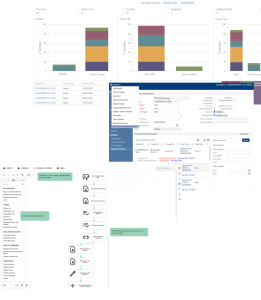In modern research, clinical, agricultural and biobanking laboratories, data is no longer merely a by‑product of experiments, it’s a strategic asset. Yet many labs still depend on manual records, spreadsheets or siloed systems that introduce hidden risks and mounting costs.
The question isn’t whether poor data management costs laboratories – it’s how much it’s already costing you.
The four hidden costs of poor data integrity undermining your laboratory
Regulatory risks: Fragmented data management in laboratory settings leads to a range of serious consequences. From a regulatory standpoint, labs that rely on inconsistent record keeping, lack complete laboratory audit trails or operate with unclear consent management and documentation face significant risks. These include non-compliance with MHRA or HTA standards, failed inspections, licence suspensions, and potentially severe reputational damage.
Operational inefficiencies: Operationally, poor data management leads to both time and personnel inefficiencies. Time is lost as staff manually search for samples, verify metadata, or attempt to reconstruct sample histories across disconnected systems. This not only slows down workflows but also pulls skilled personnel away from high-value scientific work.
Financial consequences: The financial impact can be equally as damaging, with factors such as:
- Wasted consumables from sample mix-ups,
- Project delays that jeopardize funding timelines,
- Unnecessary duplicate testing due to lost or uncertain data,
- Grant interruptions when compliance questions arise,
- Erosion of client confidence and lost business opportunities,
Each of these issues drives up costs and puts additional strain on already tight budgets, leading to spiralling financial pressures.
Scientific integrity: From a scientific perspective, the consequences can severely compromise the reliability of research. Poor data integrity in laboratories can lead to invalidated experiments, unusable or compromised samples, a lack of reproducibility, and uncertainty around consent, all of which threaten the validity of research outcomes and can undermine entire programmes.
The LIMS solution: transforming data management
Our new white paper discusses how a secure, centralised platform transforms data from passive output into a managed, compliant asset. This isn’t about adding more overhead, it’s about making data work smarter and delivering laboratory workflow automation to support the entire sample and information lifecycle via systems such as a Laboratory Information Management System (LIMS).

Key benefits of implementing a robust data management system include:
- Unified workflow management: Connecting every stage of your sample lifecycle from intake and metadata capture through to storage, consent management and disposal.
- Immutable audit trails: Recording timestamped user activity, ensuring complete transparency and traceability.
- Configurable compliance modules: Implementing modules that are designed to support compliance with industry standards such as ISO laboratory standards, HTA and MHRA, offering flexibility to meet your specific regulatory requirements.
- Intelligent data access: Delivering searchable data repositories that provide immediate visibility and control, enabling your team to manage information with confidence from day one.
Real results: what labs are achieving
In addition, the white paper details how labs adopting structured LIMS-driven workflows consistently report:
- Significant reductions in manual laboratory record keeping,
- Faster, more accurate data retrieval through sample management systems,
- Enhanced laboratory compliance audit readiness,
- Improved visibility across operations via a centralised lab data platform,
- Faster project turnaround times,
- Reduced rework and duplicate efforts,
- More effective deployment of skilled personnel.
These improvements translate directly into LIMS ROI calculation benefits through cost savings, risk reduction, and strategic value that justifies investment in proper laboratory data management infrastructure.
Why Achiever LIMS makes the difference
Interactive Software delivers Achiever LIMS – a configurable, award‑winning platform already trusted by UK universities, NHS trusts, biobanks and agritech centres. With over two decades of continuous innovation in highly regulated environments, our solution ensures compliance, enhances data integrity and improves efficiency.
Our implementation approach emphasises:
- Knowledge transfer, not dependency: Hands‑on training and knowledge‑transfer so your team owns the system.
- Flexible configuration: Your processes drive the system design. Your Achiever LIMS is configured to meet your exact workflow and compliance needs.
- Confident Go-Live: On‑site go‑live support and post‑launch guidance to ensure maximum confidence and minimal disruption.
Is this white paper for you?
Who should read the white paper? This resource is essential for:
- Laboratory managers and quality assurance leads looking to strengthen laboratory compliance and reduce audit risk
- Research directors and principal investigators concerned with research reproducibility and sample lifecycle management reliability
- Biobank administrators focused on traceability, laboratory consent management and statistical validity
- Agritech lab managers that require robust data integrity, control and accountability for regulatory partners
If laboratory data integrity underpins your mission, then this white paper is for you.
Transform your data management today